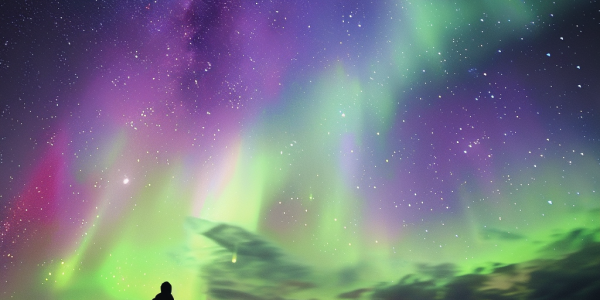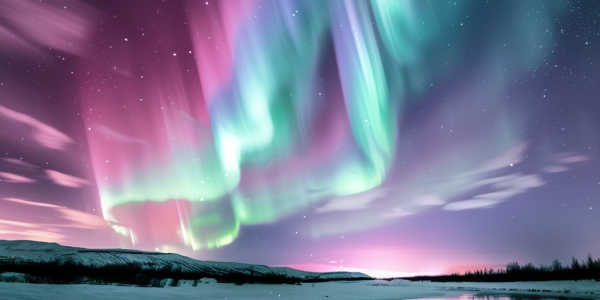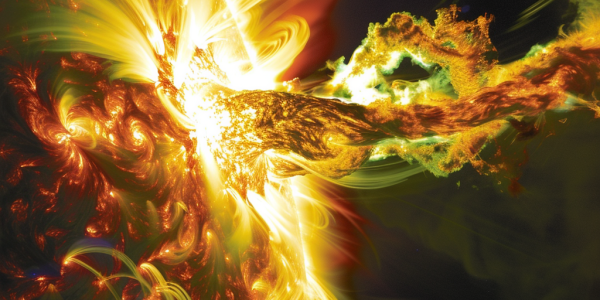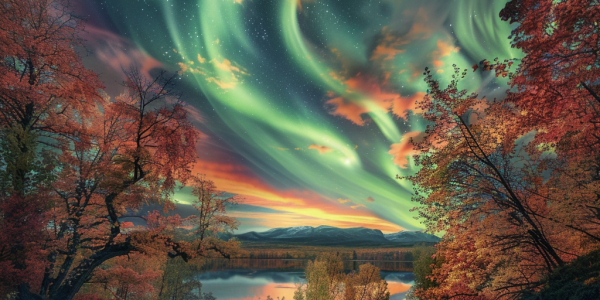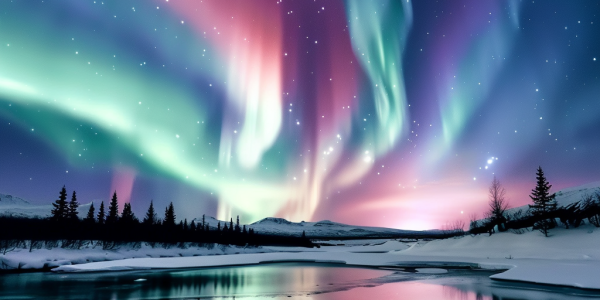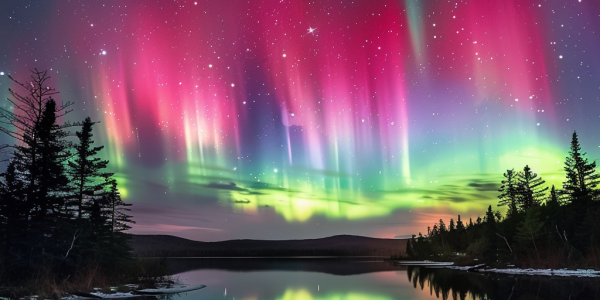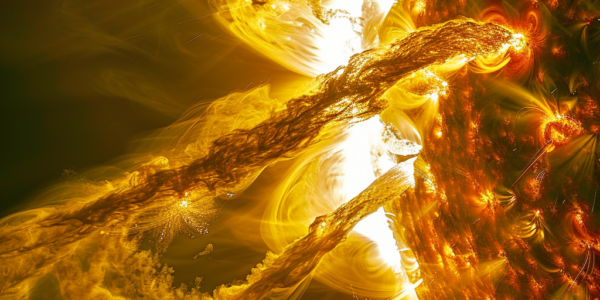Solar Maximum: Exciting Times for Skywatchers and Scientists Ahead
The sun is currently experiencing solar maximum, leading to increased solar flares and breathtaking auroras visible from Earth. This active phase of the 11-year solar cycle is expected to continue for another year, providing exciting opportunities for skywatchers and scientists alike. The Parker Solar Probe is set to make its closest approach to the sun, allowing for unprecedented data collection on solar activity and its impact on space weather.
Ancient Solar Superstorm Discovered Through Tree Ring Analysis
Researchers have discovered a solar superstorm from 664 BCE, revealed through ancient tree rings showing a spike in carbon-14 levels. This significant event, witnessed by the Assyrians, highlights the potential impacts of such storms on modern technology. Published in Communications Earth & Environment, the study emphasizes the importance of understanding solar activity to prepare for future solar events and protect our infrastructure.
Northern Lights Set to Dazzle Night Sky Across the U.S.
The northern lights, or aurora borealis, are set to illuminate the night sky across several U.S. states, offering a rare chance to witness this breathtaking phenomenon. Triggered by solar activity, the auroras create vibrant displays of color, with optimal viewing expected in states like Minnesota, North Dakota, Montana, and Washington. Prepare for an unforgettable experience by dressing warmly and seeking dark, clear skies for the best chance to see this natural wonder.
Northern Lights: Beauty Amidst Solar Storm Risks
The Northern Lights, or aurora borealis, are captivating displays that have gained attention due to heightened solar activity this year. While geomagnetic storms have reached as far south as Arizona and Florida, experts assure that observing the auroras is safe. However, solar flares and coronal mass ejections pose risks to technology and infrastructure, making awareness and preparedness essential for enjoying this natural phenomenon.
Harnessing Machine Learning for Enhanced Solar Weather Forecasting in Space Operations
As satellite operators face challenges from solar weather, advancements in machine learning are enhancing space weather forecasting. Researchers are utilizing data from NASA’s Solar Dynamics Observatory to develop predictive models that improve satellite tracking during solar events. This innovative approach is crucial for maintaining operational advantages in increasingly contested space environments.
Significant Solar Flare Erupts, Causing Radio Blackouts and Auroras Expected on Earth
A powerful solar flare from sunspot AR3842 has erupted, causing radio blackouts and potential geomagnetic storms on Earth. This second strongest flare of the solar cycle, observed by NASA’s SDO, has already disrupted communications in Hawaii and could lead to visible auroras in northern US states. Stay informed about the implications of solar activity and its effects on technology as experts monitor the situation.
Autumnal Equinox to Coincide with Minor Geomagnetic Storm
As autumn arrives, a minor geomagnetic storm is expected on September 12, 2024, coinciding with the autumnal equinox. Triggered by a recent solar flare and coronal mass ejection, this event will enhance auroras at lower latitudes, captivating astronomy enthusiasts and nature lovers alike. Experts from NOAA classify the storm as G1, indicating minimal disruptions to satellite communications and power grids. Stay informed about this celestial phenomenon and its impact on Earth.
Northern Lights Set to Dazzle US Skywatchers for Next Two Years
The aurora borealis, or Northern Lights, will be visible across the U.S. for the next two years due to a recent solar superstorm. This significant G5-rated geomagnetic storm has enhanced our understanding of Earth’s upper atmosphere and offers skywatchers an exciting opportunity to witness this natural spectacle. Researchers emphasize the importance of studying these storms to predict their impacts on satellite communications and navigation.
Central Maine Prepares for Northern Lights Spectacle Amid Solar Storm
Central Maine residents are excited for the upcoming solar storm that may reveal the northern lights, or aurora borealis. The National Oceanic and Atmospheric Administration (NOAA) predicts peak visibility around 2 a.m. on Wednesday, with optimal viewing in areas like Skowhegan. This year has been favorable for aurora sightings, and local experts advise finding dark locations for the best chance to witness this stunning natural phenomenon.
NASA Observes Strong Solar Flare from the Sun
The Sun emitted a strong solar flare, peaking at 4:56 p.m. ET on March 28, 2024. Solar flares can impact radio communications, electric power grids, navigation signals, and pose risks to spacecraft and astronauts. This flare is classified as an X1.1 flare, denoting the most intense flares. To see how such space weather may affect Earth, please visit NOAA’s Space Weather Prediction Center, the U.S. government’s official source for space weather forecasts, watches, warnings, and alerts.

